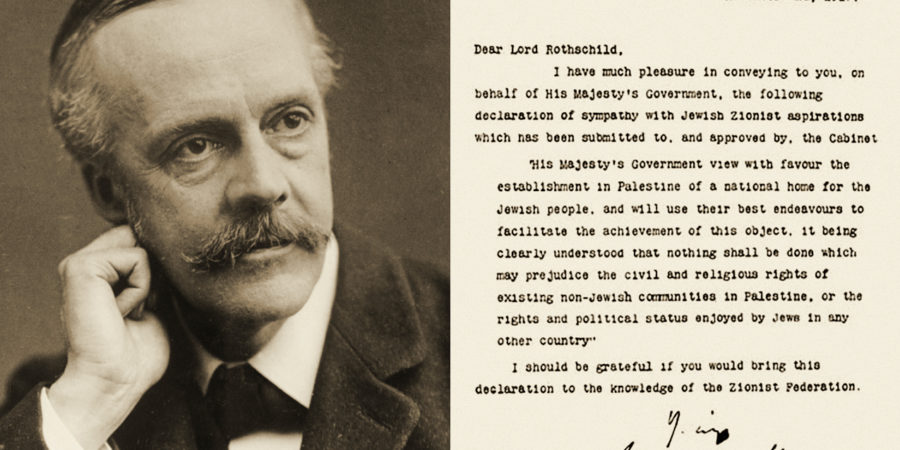The Balfour Declaration of 1917 is a document that has resonated through the annals of history, with far-reaching implications for the Israeli-Palestinian conflict. It’s a letter, yet it’s a symbol, and it’s a symbol, yet it’s a contentious piece of history. In this blog post, we will delve into the complexities of the Balfour Declaration controversy, a century-old narrative of conflicting hopes, promises, and grievances that continue to shape the destiny of the Middle East.
I. Historical Background
Before we dissect the controversy, it’s crucial to understand the historical context in which the Balfour Declaration was born. In 1917, the First World War was in full swing, and the Ottoman Empire, which controlled Palestine, was gradually losing its grip on the region. Concurrently, a political movement called Zionism had been advocating for a Jewish homeland in Palestine, primarily led by European Jews who faced persecution and sought refuge.
II. The Balfour Declaration: A Double-Edged Sword
The Balfour Declaration, authored by Arthur James Balfour, Britain’s Foreign Secretary, was a pivotal moment. The declaration was addressed to Lord Walter Rothschild, a prominent British Zionist and leader of the British Jewish community. In it, Balfour expressed the British government’s support for the establishment of a “national home for the Jewish people” in Palestine.
At first glance, this may appear to be a straightforward statement of support for the Zionist cause. However, the declaration is often considered a “double-edged sword” for several reasons:
- Ambiguity: The document was intentionally vague, leaving room for interpretation and negotiation. It did not define the borders of the proposed Jewish “national home” or specify the rights and status of the Arab population already living in Palestine.
- Non-prejudice to Other Communities: The Balfour Declaration stated that nothing should be done to prejudice the “civil and religious rights of existing non-Jewish communities in Palestine.” This commitment created complexities, as it was unclear how Jewish immigration and settlement would coexist with the rights of the Arab population.
- The British Mandate: Following World War I, the League of Nations granted Britain a mandate to govern Palestine. The terms of the mandate were influenced by the Balfour Declaration, solidifying British support for the Zionist movement.
III. Interpretations and Controversies
The Balfour Declaration’s ambiguity gave rise to various interpretations and controversies that persist to this day. Here are some key points of contention:
- Historical Rights: Palestinians argue that the declaration disregarded their historical rights to the land, as they had lived in Palestine for generations. They see the declaration as a betrayal of their interests and claim that it paved the way for a Jewish homeland at their expense.
- Right of Return: For Palestinians, the influx of Jewish immigrants and the subsequent establishment of Israel in 1948 resulted in a Palestinian refugee crisis. The right of return for these refugees to their pre-1948 homes is a contentious issue, with many Palestinians demanding recognition and restitution.
- Israeli Perspective: Israelis, on the other hand, view the Balfour Declaration as a historic milestone that legitimized their aspiration for statehood. They see it as the foundation of the modern State of Israel.
- International Impact: The declaration also had international implications. Some argue that it set a precedent for the use of external powers in shaping the Middle East’s destiny, fueling anti-colonial sentiments in the region.
- Future of Jerusalem: The status of Jerusalem, a city sacred to Jews, Christians, and Muslims, has been a contentious issue for decades. The Balfour Declaration did not address the city’s future, and this ambiguity has contributed to ongoing tensions.
IV. Impact on the Israeli-Palestinian Conflict
The Balfour Declaration is deeply intertwined with the Israeli-Palestinian conflict. It laid the groundwork for Jewish immigration to Palestine, which eventually led to the establishment of the State of Israel in 1948. The territorial disputes and demographic changes resulting from these events have fueled tensions and violence in the region.
Over the decades, numerous wars, negotiations, and peace processes have attempted to address the grievances and claims of both sides. However, the fundamental issues surrounding the Balfour Declaration, including borders, refugees, and sovereignty, continue to be major obstacles to achieving a lasting solution.
V. International Repercussions
The Balfour Declaration also had broader international repercussions. The Middle East remains a region fraught with conflict, partly due to its colonial past and the geopolitical interests of external powers. The declaration, in the eyes of some, exemplified this interference, leading to resentment against Western involvement in the Middle East.
VI. The Ongoing Debate
The debate over the Balfour Declaration shows no signs of abating. It remains a contentious and emotionally charged issue for both Israelis and Palestinians. It is a constant reminder of historical injustices and unfulfilled promises. Addressing this controversy is an essential step toward any potential resolution of the Israeli-Palestinian conflict.
VII. Conclusion
The Balfour Declaration is a paradox, a letter that altered the course of history and became a symbol of conflicting aspirations. Its ambiguity has left a lasting legacy, contributing to a century of tension, conflict, and unresolved grievances between Israelis and Palestinians. Understanding the Balfour Declaration controversy is essential for comprehending the intricate web of issues in the Middle East and moving towards a more peaceful and equitable future.
You May Also Like –White House Secures Safety from Eight More AI Companies


